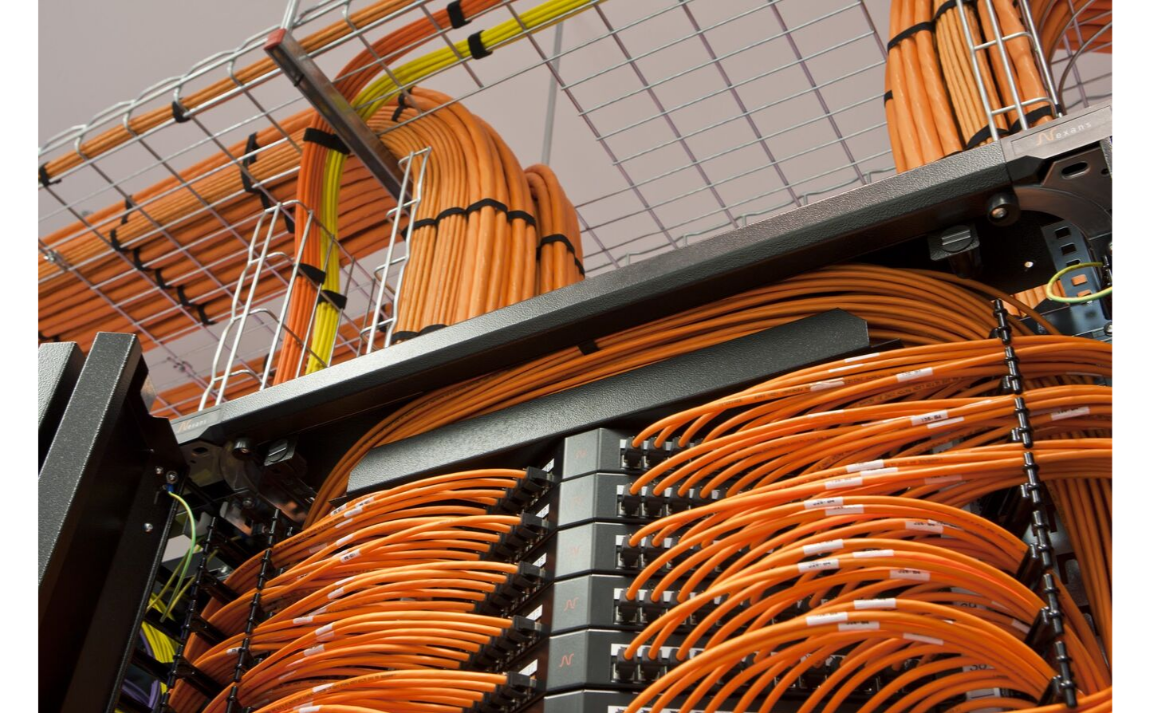- About Aginode
- Data Networks
- Telecom Infrastruktur
- Produkte
-
Ressourcen
- Ressourcen
- Documentation
- Blog
-
Case Studies
- Übersicht
- Innoasis development in Norway
- Eemsdelta Campus
- Hotelschool The Hague
- Emergency covid hospital, Hong Kong
- Société du Grand Paris
- Centrin Datacentres
- Airbus
- Athens Historic City Hall
- Pinewood Studios
- Goethe University Frankfurt
- Denmark New University Hospital
- University of Toulouse
- CHM Maubeuge: a model for future-ready hospitals
- Webinars
- Software Tools
- Warranty
- Newsroom
- Suchen
- Kontaktieren Sie uns
- Vergleichen
- Anmelden
Data Centres
The benefits of Switch presentation panels in a cabling infrastructure


In large network infrastructures the use of presentation patch panels mirroring switch ports can be very beneficial. This practice helps protect your valuable active equipment and improves cable management.
What use is a presentation panel?
A presentation patch panel, also referred to as a mirror or representation panel, sits between the network switch and the horizontal distribution panel in a 3-connector channel. Its main purpose is to replicate or mirror the physical switch ports onto a patch panel. So, if you picture a switch equipped with 24 ports, switch port number one will relate to presentation panel port number one, etc.
Presentation panels are mostly used in Data Centres or Enterprise environments consisting of large complex IT network infrastructures. They fit perfectly in places with multi-layer switches or where expensive switches are sitting in a secured cabinet. This way, any moves, adds and changes involving plugging and unplugging of patch cords can be performed on the presentation panel - without the risk of damaging the switch.

The benefits of presentation panels
Of course, adding a third layer of presentation panels to your network in the role of Protector of Switches, can have its drawbacks. It increases not only the initial investment cost of the network infrastructure but also adds to the density of panels and patch cords in your cabinet. Luckily, the benefits of having presentation panels outweigh the drawbacks.
First off, using presentation panels means you put your costly active equipment out of harm’s way. In the case of network reconfiguration, only the patch cords on the presentation panels need to be touched. Or think of cases where the switches and distribution panels are located in different cabinets. Presentation panels also contribute to better cable management, thus avoiding spaghetti cabling clogging up in front of your switches.
So overall the use of presentation panels is considered good practice, especially for enhanced security and management. In future blogs we will look at how this can be expanded further by including infrastructure management tools.
Kategorien
Unsere Websites
Wählen Sie Ihr Land aus, um unsere Produkte und Lösungen zu finden
-
Africa
- Africa
- Ghana
- Ivory Coast
- Morocco
- North West Africa
- Americas
- Asia
- Europe
- Oceania
